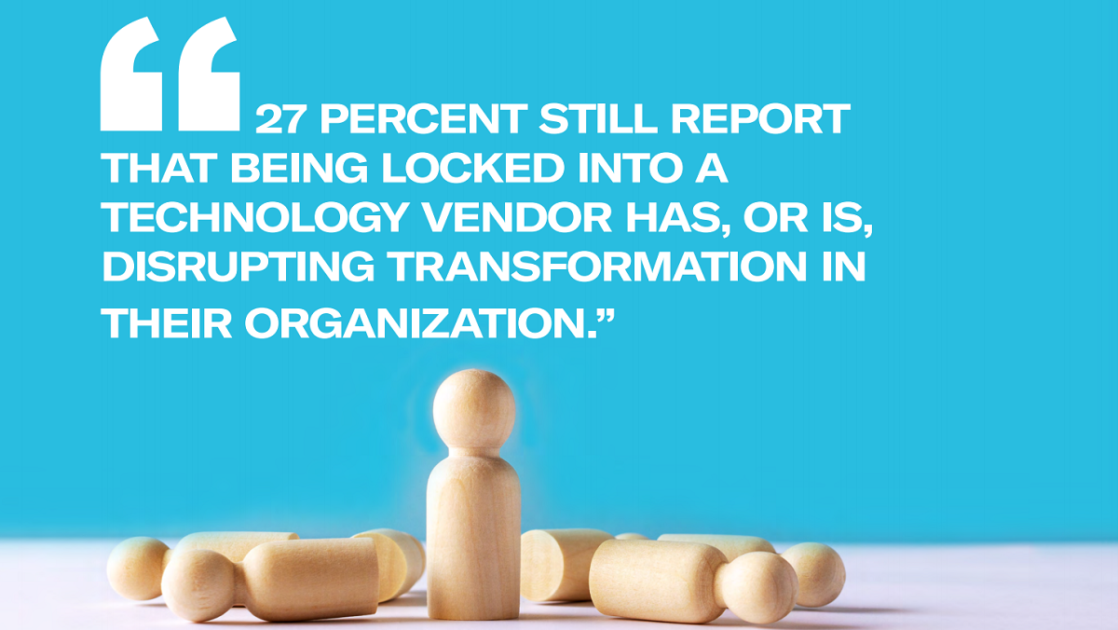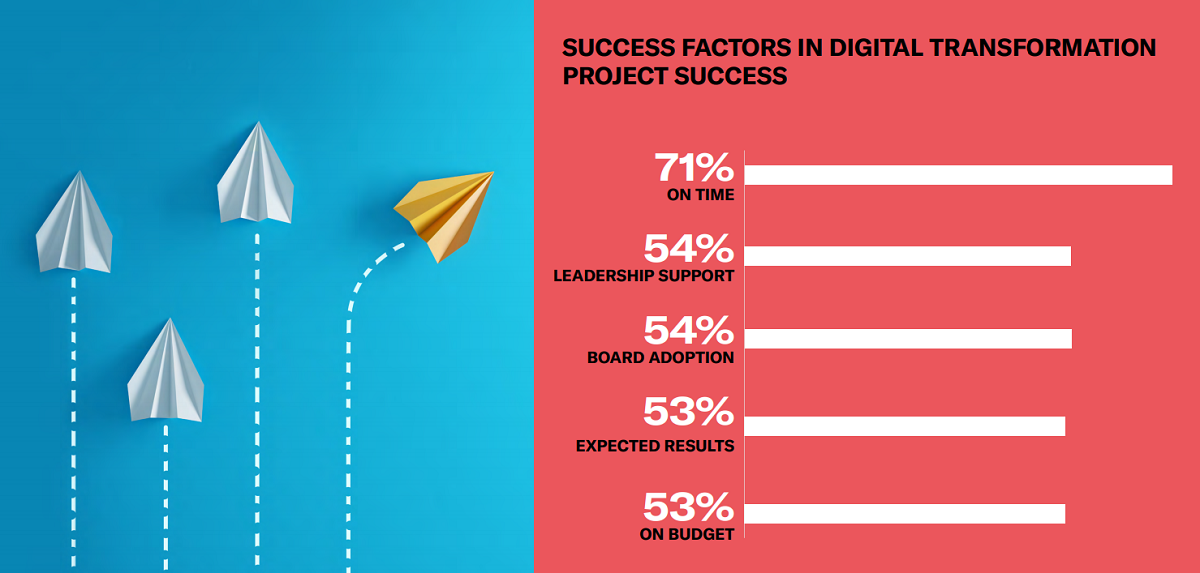Over a quarter (27 percent) of respondents report that being locked into a technology vendor has, or is, disrupting transformation in their organization.
Organizations seek speedy value from their business software: technology that’s fit for purpose and free from unscrupulous vendor lock-in practices. These are some of the sentiments revealed in a new independent global survey, Digital Transformation Investment in 2020 and Beyond: Factors That Will Impact the Success or Failure of Technology Investments in the Post-Pandemic Era, published this week.
These issues are not only hindering digital transformation programs and the potential for economic recovery, but the statistics show that failure to meet these basic needs has a serious impact on organizations’ bottom line.

Time for Change
Too many organizations are being suffocated by the legacy software vendors. More than 3,000 IT decision-makers were surveyed across Australia, France, Germany, the Nordics, UK and USA – almost a third (32 percent) experienced being forced by senior management, or their board of directors, to buy from a vendor and/or use technology that’s well-known, but not necessarily fit-for-purpose.
Despite almost half (47 percent) of respondents citing that the successful delivery of digital transformation projects hinges on technology that is fit for purpose, over a quarter (27 percent) report that being locked into a technology vendor has, or is, disrupting transformation in their organization.
Indeed, one of the respondents’ greatest concerns regarding digital transformation is managing the conflict between strategic needs and the ability to deliver at the frontline (39 percent).
The need to innovate has never been more important. Yet, even with disdain growing among groups of users, the unprincipled few in our otherwise amazing industry are still trying to hypnotize their customers into a myopic ‘Stockholm syndrome’ state. It is time we join together to hold them to a higher standard.

The Trust Factor
Talking about IT failures and vendor behaviors can be uncomfortable. But it is important, because it is these industry lessons that continue to form the backbone of our own motivation at IFS. We actively listen to customers. They are our True North. Everything we do maps against our purposeful intent to be easy to work with.
When we ask our customers why they choose IFS, the resounding themes are trust and culture – our low-pressure approach and willingness to calculate very clearly defined value. This trust factor is something I hold in very high regard.
When asked what would help them trust IT vendors more, our survey respondents cited: delivering on time (46 percent), support before, during and after project delivery (42 percent) and delivering projects that are faster to realize value (37 percent).
This IDC paper from 2019, explores the time and value topics in some detail. Compared to an industry time-to-value average of 3-5 years, IFS customers are realizing value, on average, in just 15 months. As one customer put it to me recently, “What’s the point of owning a telephone that never rings.”

When Failure Bites
Crisis is an exercise in change management. The global pandemic has forced many organizations to execute a lot of change, very quickly. For many, the ability to innovate with technology, servitize their business or diversify, might literally prove to be a ‘make or break’ situation.
So, the crude reality is that, when IT programs fail, businesses can fail. The impact can be hard – and long-lasting. A third (34 percent) of survey respondents said it took their business 2-3 years to recover from an IT project failure. Another third (35 percent) took 1-2 years to make their recovery. Under the weight of today’s macro-economic pressures, businesses simply don’t have that amount of time to waste.
The consequences are harsh too. Of the impacts felt by respondent businesses, a quarter (24 percent) experienced financial loss and lost customers (23 percent).
Among those whose transformation projects overran on time, half (46 percent) had budgets cut in other areas, and a third had a headcount freeze (31 percent), employee discord (30 percent) and investment in similar projects deterred (30 percent).
Read the full findings from the survey here. But allow me to leave you with one final statistic: of the global respondents, 38 percent wish the company they work for had more of a ‘change before you have to’ mentality. Let’s think about that for a moment. While it seems that the growth and recovery of some organizations is being hindered by slow time-to-value and ‘lock-in’ practices of legacy vendors, their employees wish they carried more of the challenger mentality.

Access a complimentary copy of the report here.
Do you have questions or comments?
We’d love to hear them so please leave us a message below.